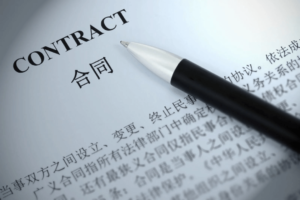Table of Contents
ToggleIntroduction
In today’s global economy, engaging with Chinese manufacturers can be a highly lucrative venture for businesses worldwide. However, it also involves navigating a complex landscape fraught with risks. Comprehensive background investigations are crucial in ensuring a secure and profitable relationship with Chinese manufacturers. This article delves into various aspects that should be thoroughly examined during such investigations.
General Information of the Chinese Company
Understanding the basic information such as the history, location, size, and scope of operations is the first step. This helps in assessing the scale and capacity of the manufacturer. Additionally, knowing the company’s background can reveal its growth trajectory and resilience in the market. It also helps in understanding the company’s potential to meet supply demands and manage large-scale orders.
Legal Status of the Chinese Manufacturer
Verifying the legal status involves ensuring that the Chinese manufactuer is duly registered and operates under the laws of China. This includes checking their business license, tax registration, and other regulatory compliances. Furthermore, understanding the legal standing helps in assessing the risk of legal complications and ensures the company adheres to labor and environmental laws, which are crucial for ethical business practices.
Credibility of the Chinese Manufacturer
Assessing the credibility involves evaluating the company’s reputation in the market, its history of business relationships, and reviews from past clients. This assessment can also include checking their standing with local business bureaus or industry associations. A credible Chinese manufacturer not only has a strong market reputation but also demonstrates consistent quality in its products and reliability in its business dealings.
Ownership Structure and Shareholder Information
Understanding who owns the Chinese manufacturer and the nature of its shareholders provides insights into the company’s decision-making processes and financial stability. This information can also reveal potential conflicts of interest or affiliations that might impact the business’s operations. Additionally, knowing the shareholders, especially in publicly-traded companies, can indicate the level of financial scrutiny and corporate governance the company is subjected to.
Subsidiaries of the Chinese Company
Investigating any subsidiaries can reveal the company’s expansion strategies and potential areas of strength or concern. It also helps in understanding the diversification of the business and how integrated these subsidiaries are in the overall supply chain. Examining subsidiaries can also offer insights into the company’s geographic reach and its adaptability in different markets or sectors.
Business and Main Products
A thorough review of the company’s business activities and main products helps in determining its core competencies and market positioning. This review can also provide insights into the company’s innovation capabilities and how it responds to market trends and customer needs. Understanding their product range and specialization can also indicate the level of technological advancement and quality control measures in place.
Qualifications
Evaluating the qualifications and certifications of the Chinese manufacturer ensures that they meet industry standards and regulatory requirements. This evaluation also helps in identifying if they have specialized expertise or capabilities that set them apart in their industry. Moreover, certifications from recognized authorities can be a testament to the company’s commitment to quality, safety, and continuous improvement.
Company’s Register File
Reviewing the company’s register file provides legal assurance about the company’s legitimacy and operational history. This file can also include crucial details about any past changes in the company structure, mergers, or acquisitions, which can be vital for understanding its stability and historical performance. Additionally, the register file may contain information about the company’s compliance with financial reporting and corporate governance standards.
Litigation, Enforcement, and Other Liabilities
Investigating past and ongoing litigation, enforcement actions, and other liabilities can uncover potential risks and legal entanglements. Additionally, this scrutiny can signal the Chinese manufacturer’s adherence to legal standards and its propensity to resolve conflicts. Frequent litigation may indicate underlying operational issues or a contentious business environment.
Regulatory Compliance
Ensuring that the Chinese manufacturer complies with local and international regulations is essential to avoid legal complications. This includes environmental, health, and safety standards, which are critical in maintaining ethical practices. Compliance also reflects the company’s dedication to maintaining high standards in its operations.
Main Assets
Analyzing the company’s main assets like land use rights, equipment, vehicles, and intellectual properties gives a picture of its operational capacity and financial health. The state and modernity of these assets can also indicate the company’s ability to innovate and stay competitive in the market.
Lease of Premises Register
Reviewing the lease agreements for premises can provide insights into the stability and longevity of the manufacturer’s operations. Long-term leases might suggest a stable operational base, whereas multiple short-term leases could indicate flexibility or instability.
Property and Liability Insurances
Verifying the insurance coverage helps in assessing the risk management practices of the company. Adequate insurance coverage also indicates the company’s preparedness for unforeseen events, protecting both the manufacturer and its business partners.
Major Creditors and Debts
Understanding the Chinese company’s financial obligations helps in assessing its financial health and stability. High levels of debt or overdue payments can be red flags, signaling potential financial distress or mismanagement.
Major Contracts with Suppliers and Customers
Reviewing contracts with key suppliers and customers can reveal the Chinese manufacturer’s business practices and market reliability. Long-term contracts with reputable partners can indicate stability and a strong market position.
Loan or External Security
Investigating any external financing or securities gives insights into the Chinese company’s financial strategies and potential risks. It also helps in understanding the company’s leverage and how it manages financial risks.
Employment and Social Security
Ensuring compliance with employment laws and social security regulations is critical for ethical and legal considerations. This includes fair labor practices, employee rights, and workplace safety, which are crucial for responsible business operations.
Acquisition of Financial Subsidies and Major Funds
Understanding how the company finances its operations, including through subsidies and funds, can indicate its financial health and governmental relationships. This information can also reveal how dependent the company is on external financial support.
Related-party Transactions
Examining transactions with related parties helps in identifying any potential conflicts of interest or unusual business practices. Such transactions should be scrutinized for fairness and compliance with standard business practices.
Corporate Taxation
Assessing the Chinese manufacturer’s tax compliance is crucial to understand its financial integrity and legal standing. Proper tax practices are not only a legal requirement but also an indicator of the company’s overall ethical approach to business.
Governance Structure and Operation
Evaluating the governance structure and standardized operation practices helps in understanding the company’s management efficiency and ethical standards. This includes reviewing the roles and responsibilities of the board, management policies, and internal controls.
Patent and Intellectual Property
Reviewing the company’s patents and intellectual properties ensures the protection of innovations and compliance with IP laws. It also indicates the company’s focus on research and development, which is vital for long-term sustainability and competitiveness.
On-site Investigation Records and Photos
Conducting on-site visits and maintaining records and photos provide first-hand evidence of the company’s operational reality. These records are invaluable for verifying information provided in documents and for getting a true sense of the company’s operational capabilities.
Explanations on Key Concerns and Risks
Finally, compiling explanations on identified concerns and risks helps in making an informed decision about engaging with the Chinese manufacturer. This step is crucial for understanding the nuances and potential red flags that might not be apparent in the initial stages of investigation.
Conclusion
Conducting a comprehensive background investigation on Chinese manufacturers is not just a precaution; it’s a necessity in today’s global business environment. This detailed approach helps in mitigating risks, ensuring compliance, and fostering a successful and sustainable business relationship. By thoroughly understanding these various facets, businesses can make informed decisions that safeguard their interests while benefiting from the opportunities presented by global trade.
FAQs
- Why is it important to investigate the general information of a Chinese manufacturer?
- Investigating the general information helps gauge the company’s size, history, and operational scope, providing a foundational understanding of its capabilities and business model.
- What does checking the legal status of a Chinese manufacturer involve?
- It involves verifying the company’s registration, ensuring it operates legally within China, and checking its adherence to business licenses and tax regulations.
- How do you assess the credibility of a Chinese manufacturer?
- This can be done by evaluating the company’s market reputation, reviewing feedback from past clients, and examining its history of business relationships.
- Why is understanding the ownership and shareholder information of a Chinese company important?
- This information sheds light on the company’s decision-making processes, financial stability, and potential external influences.
- What is the significance of examining a Chinese manufacturer’s subsidiaries?
- Investigating subsidiaries can reveal insights into the company’s expansion strategies, diversification, and potential strengths or weaknesses.
- Why is it crucial to review the company’s main products and business activities?
- This helps determine the manufacturer’s core competencies, technological capabilities, and market positioning.
- What does analyzing the company’s qualifications entail?
- It involves verifying industry-specific certifications and ensuring compliance with relevant standards and regulatory requirements.
- How does reviewing litigation and liabilities help in assessing a Chinese manufacturer?
- This reveals the company’s legal entanglements, potential risks, and how it handles disputes and liabilities.
- What is the importance of investigating regulatory compliance?
- Ensuring the manufacturer adheres to both local and international regulations is crucial to avoid legal and operational complications.
- Why should one analyze the main assets of a Chinese manufacturer?
- Analyzing assets like land rights, equipment, and intellectual property helps assess the company’s operational capacity and financial health.
- What is the role of on-site investigations in evaluating Chinese manufacturers?
- On-site visits provide direct evidence of the company’s operational realities, facilities, and workforce conditions, offering a tangible perspective beyond documentation.
- How do related-party transactions influence a company’s risk assessment?
- Examining these transactions helps identify potential conflicts of interest or non-standard business practices, impacting the risk assessment.
- Why is understanding a Chinese manufacturer’s intellectual property and patents crucial?
- Reviewing IP and patents ensures the protection of innovation, compliance with IP laws, and can indicate the company’s technological advancement.
Contact us if you need help with background investigation of Chinese companies, protecting patents, trademarks, verification of contracts to the law in China, or help with other legal challenges that you have in China.
If you require our assistance or have further questions about our services, please do not hesitate to contact our Customer Relationship Managers Jan Erik Christensen, at janerik@ncbhub.com or Milla Chen, at huimin.chen@ncbhub.com. We look forward to hearing from you and helping your business succeed in China.








